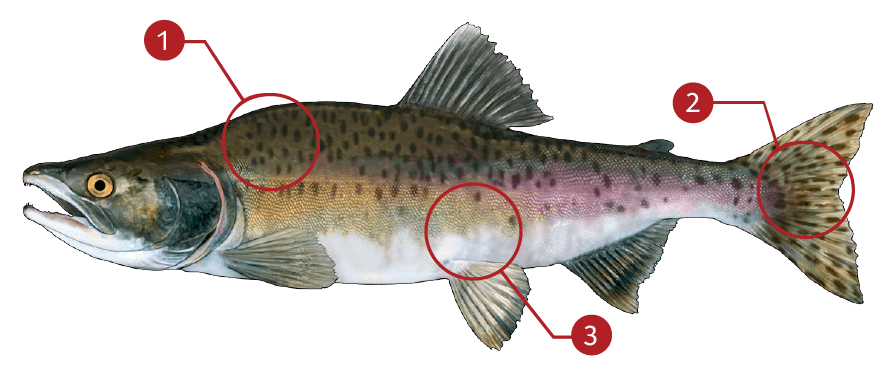PINK SALMON
How to identify a Pink Salmon
At sea they are silvery, as are all salmons. They can be identified by the large, black, oval-shaped spots on both halves of the tail and large spots on the back and adipose fin. At spawning time the male is easily recognized by its extremely humpbacked appearance. The male develops a kype at spawning time. The body of breeding males is pale red or pink on the sides with brown to olive-green blotches.
Where to catch Pink Salmon
The pink salmon is endemic to the Pacific and Arctic oceans, Bering and Okhotsk seas, the Sea of Japan, and the rivers that flow into these waters. It occurs from Alaska south to the Sacramento River, California, throughout the Aleutian Islands, and northeast into the MacKenzie River, N.W.T., Canada. It has been introduced to Newfoundland and to the western coast of Lake Superior and is maintaining populations in these locations. Since the introduction into Newfoundland there have been very sporadic reports of pink salmon in Labrador, Nova Scotia, and Quebec. It has spread through Lake Superior and is now spawning in tributaries of Lake Huron.
IDENTIFICATION

| |
Males have very large humpback |
| |
Large, black, oval-shaped spots on both halves of the tail and large spots on the back and adipose fin |
| |
Very small scales |
TARGET AREAS
|
|
Acknowledgements: We thank TAKEMEFISHING.org (www.takemefishing.org), Wisconsin Department of Natural Resources, Indiana Department of Natural Resources for their contributions to these FISH FACTS.

